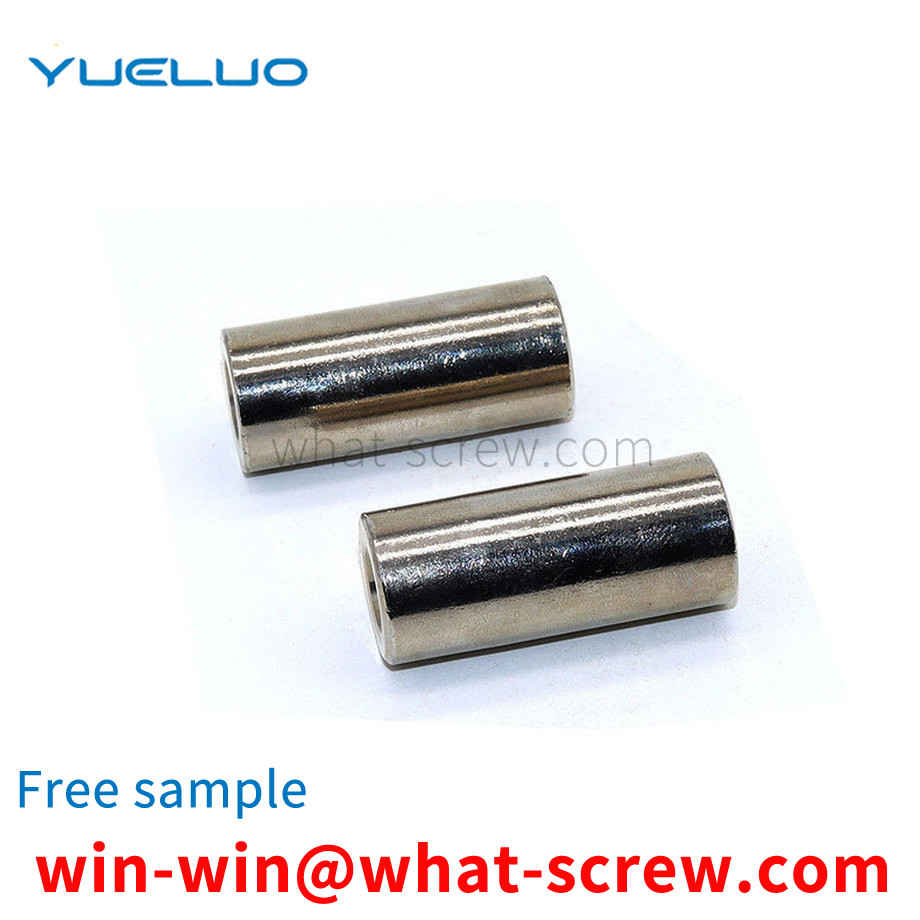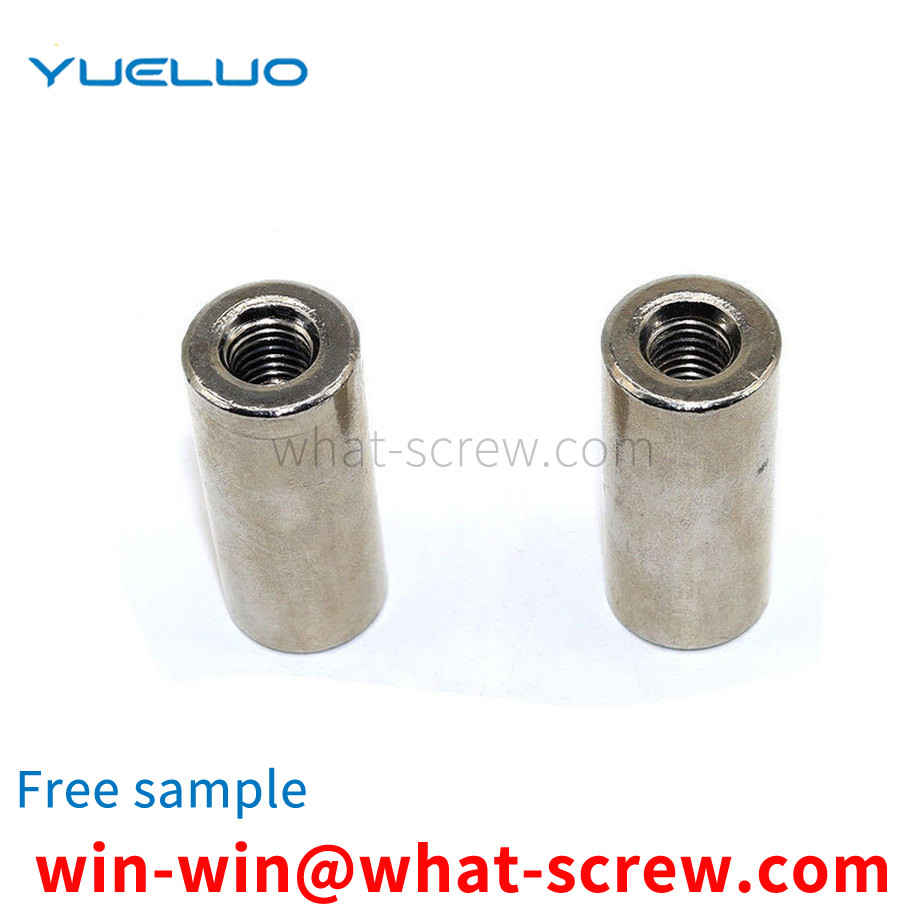Installation method broadcast 1. One-time burying method: When pouring concrete, bury the anchor bolts. When the high tower is controlled by overturning, the anchor bolt should be buried once. 2. Reserved hole method: The equipment is in place, the holes are cleaned, the anchor bolts are placed in the holes, the equipment is positioned and aligned, and then poured with non-shrinkage fine stone concrete that is one level higher than the original foundation, and compacted and compacted. . The distance from the center of the anchor bolt once buried to the edge of the foundation should not be less than 2d (d is the diameter of the anchor bolt), and should not be less than 15mm (d≤20, it should not be less than 10mm), not less than half the width of the anchor plate Add 50mm, when the above requirements cannot be met, appropriate measures should be taken to strengthen it. The diameter of the anchor bolts used for the structure should not be less than 20mm. When subjected to earthquake action, double nuts should be used for fixing, or other measures to effectively prevent loosening should be adopted, but the anchorage length of anchor bolts should be increased by 5d compared with the anchorage length of non-seismic action. Installation planning of anchor bolts Treatment of anchor bolts loose in the foundation When the anchor bolts are tightened, the bolts may be pulled out. At this time, the bolts should be adjusted to their original positions, and the foundation around the bolts should be shoveled out enough. , and then weld two U-shaped steel bars vertically and horizontally on the bolts, and finally clean the pit with water and grouting, and then tighten the live anchor bolts after the concrete has solidified to the design strength. The treatment method of the live anchor bolt deviation is roughly the same as the dead ground. The method for the anchor bolts is the same, except that the anchor bolts can be pulled out for processing. If the bolt is too long, a section of the thread can be cut off on the machine tool; if the bolt is too short, it can be extended by hot forging; if the position is inconsistent, it can be corrected by bending. Application industry: suitable for various equipment fixing, steel structure foundation embedded parts, street lights, traffic signs, pump, boiler installation, heavy equipment embedded fixing, etc.
The utility model proposes an installation structure which adopts a T-shaped bolt to cooperate with a channel, which includes a bolt head, an installation channel, a nut and a washer. The upper end of the screw rod is provided with a screw head, the two side walls of the bolt head are respectively provided with an arc surface, the two ends of the bolt head are provided with protrusions, and the interior of the installation channel is provided with an inner cavity, There is an opening above the installation channel, the bolt head is installed in the inner cavity, the nut is installed on the screw, the nut is located above the installation channel, and the gasket is installed on the installation channel and the nut between.
Thread Code Broadcast Coarse Thread Series UNC Fine Thread Series UNF Extra Fine Thread Series UNEF Fixed Pitch Series UN Marking Method Broadcast Marking Method: Thread Diameter - Number of Threads per Inch Serial Code - Accuracy Grade Example: Coarse Thread Series 3/8—16 UNC— 2A Fine pitch series 3/8—24 UNF—2A Extra fine pitch series 3/8—32 UNEF—2A Fixed pitch series 3/8—20 UN—2A The first digit 3/8 indicates the outer diameter of the thread, in inches , to convert to metric unit mm, multiply by 25.4, that is, 3/8×25.4=9.525mm; the second and third digits 16, 24, 32, 20 are the number of teeth per inch (the number of teeth on the 25.4mm length); The text code UNC, UNF, UNEF, UN after the third digit is the series code, and the last two digits 2A are the precision grade. UNC: Unified Coarse Thread.
total of 13 domestic automotive fastener companies were interviewed and investigated in this survey, and all the companies under investigation have passed the TS16949 system certification. An average car has about 1500 fasteners, and the total bolt assembly time for each car is about 2.5~3.2h. It can be seen that the variety and quality of fasteners have an important impact on the level of the main engine and the quality of the vehicle. This article analyzes the localization of high-strength threaded fasteners and the management of supply quality from the perspective of the production process of high-strength threaded fasteners. Product flow of high-strength threaded fasteners The production process of high-strength threaded fasteners is raw material transformation → cold heading forming → thread processing (thread rolling or thread rolling) → heat treatment → surface treatment → sorting and packaging, generally used above grade 10.9 Thread rolling process after heat treatment. The steel grades commonly used for high-strength bolts of automotive fastener materials are 35 steel, 45 steel, and ML35 steel for grade 8.8 bolts; 35CrMo for grade 10.9 bolts; 40Cr; 35CrMo, 42CrMo, and SCM435 for grade 12.9 bolts. The raw materials for domestic fasteners are basically in the hot-rolled state, while the steel for fasteners produced in Japan and other countries is basically in the state of direct cold heading. Users do not need pretreatment, which can reduce costs from the link. Common failure modes of fastener failure are assembly elongation, fatigue fracture, and delayed fracture. In addition to the material, the quality of cold heading forming and thread processing (thread rolling or thread rolling, tapping) threaded fasteners, forming equipment and thread processing equipment and molds (production process and equipment) are the key factors to ensure their quality. Especially in the state of large-scale and multi-variety supply, automotive fasteners that require high machining accuracy, how to ensure product consistency and defect prevention is one of the problems faced by fastener production. For the cold heading equipment and thread processing equipment of the investigated companies, domestic equipment accounts for about 40%, Taiwan equipment accounts for 50%, and imported (Europe, America, Japan) equipment accounts for about 10%; Partial folding, thread streamline upsetting, tooth wrinkles and cracks, etc. Domestic fastener factories are limited by capital or other reasons, and most of them use domestic equipment and Taiwan equipment to produce fasteners for automobiles. To ensure the dimensional tolerance and geometric tolerance of large-scale production of high-end fastener products, online monitoring should be increased. Means and mold making level. Eliminate unqualified products in production, so as to ensure the assembly quality of OEMs and OEMs. [1] About 80% of the surveyed fastener enterprises have heat treatment equipment, and most of them use Taiwan heat treatment process lines; the process line equipment is a continuous mesh belt furnace with atmosphere protection, and the atmosphere, temperature and process parameters are controlled by a computer. The high-strength fastener industry is a relatively competitive industry. If we want to have a thorough and objective analysis of the technology and market of the high-strength fastener industry, we need to start from the following aspects: domestic high-strength fasteners Industry and Enterprise Competition Pattern High-strength Fastener Industry Industrial Policy High-strength Fastener Product Technical Standards and Regulations my country's High-strength Fastener Product Technology Competition Pattern Dynamics Regarding these six aspects, many domestic research institutions have conducted in-depth research and research, and many institutions have long been engaged in research and research in this industry.
Inspection method There are two types of screw surface inspection, one is the inspection before the screw is produced and not plated, and the other is the inspection after the screw is plated, that is to say, after the screw is hardened and the surface of the screw is treated. . After the screws are produced and before electroplating, we inspect the screws in various aspects such as size and tolerance. See if there are national standards or customer requirements. After the surface treatment of the screws, we will inspect the plated screws, mainly to check the color of the plating and whether there are any broken screws. In this way, when we deliver screw goods to customers, customers can successfully pass the customs when they receive the goods. Inspection of screws after treatment: 1. Appearance quality requirements The inspection of the appearance of screws is carried out from the aspects of appearance, electroplating layer and so on. Second, the inspection of the thickness of the screw coating 1. The measuring tool method uses a micrometer, a vernier caliper, a plug gauge, etc. 2. Magnetic method The magnetic method is used to measure the thickness of the coating layer, which is a non-destructive measurement of the non-magnetic coating layer on the magnetic substrate with a magnetic thickness gauge. 3. Microscopy Microscopy is called metallographic method, which is to magnify the etched fasteners on a metallographic microscope with a micrometer eyepiece to measure the thickness of the coating on the section. 4. Timing flow method The timing flow method uses a solution that can dissolve the coating to flow on the local surface of the coating, and calculates the thickness of the coating according to the time required for the local coating to dissolve. There are also coating drop method, anodic dissolution Coulomb method, etc. 3. Inspection of the adhesion strength of the screw coating There are many methods for evaluating the adhesion between the coating and the base metal, usually the following. 1. Friction polishing test; 2. File method test; 3. Scratch method; 4. Bending test; 5. Thermal shock test; 6. Extrusion method. 4. Inspection of corrosion resistance of screw coatings The corrosion resistance inspection methods of coatings include: atmospheric exposure test; neutral salt spray test (NSS test); acetate salt spray test (ASS test), copper accelerated acetate salt spray test (CASS) test); and corrosion paste corrosion test (CORR test) and solution spot corrosion test; immersion test, inter-dipping corrosion test, etc.
We have many years of experience in the production and sales of screws, nuts, flat washers, etc. The main products are: color aluminum alloy lock nuts, square head bolts, 201 washers, star bolts and other products, we can provide you with suitable fasteners for you solution.



















 Service Hotline
Service Hotline




